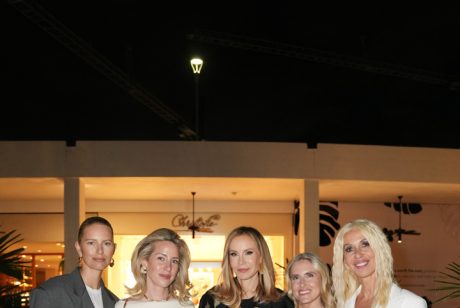- Shop OnlineShop Online
- Women
- Men
- Kids
- Home
- Jewelry
- Brands
- Bal Harbour Shops
- 100% Capri
- Addict
- Alexandre Birman
- Ara Vartanian
- Assouline
- Bonpoint
- Christofle
- Couture Kids
- Cremieux
- Davidor
- Elisabetta Franchi
- Ermanno Scervino
- Frette
- Haremlique Istanbul
- Lalique
- Maria Tash
- Monnalisa
- Morgenthal Frederics
- Santa Maria Novella
- Scanlan Theodore
- Silvia Tcherassi
- Vhernier
- Vilebrequin
- Wolford
The latest styles - Collections
- Store Directory
- Dining
- Style
-
TODAY’S HOURS: 11 AM - 9 PM
- Join Access
Social Scene
In Conversation With Gene Pressman and Elysze Held
On Wednesday, November 19th, Gene Pressman, Co-CEO and Creative Director of Barneys New York, and Miami’s very own fashion icon Elysze Held took center stage at the iconic Bal Harbour Shops, where they discussed his memoir, They All Came to Barneys: A Personal History of the World’s Greatest Store.
More Social Scene
@balharbourshops
follow us on instagramBlack dresses, plaid suits, sweatpants and a tee... Loewe’s Toy pumps with embellished mesh are really going to tie any outfit together. Discover their magic for yourself here, at Loewe at Bal Harbour Shops.

So pretty. So Pomellato. Whether it’s a spontaneous gift for yourself during this busy holiday season or you’re looking to put a smile on someone special’s face when they unwrap their holiday gift, there’s nothing like the Italian house’s high jewelry collection featuring cabochon-cut aquamarines and diamonds. Discover them here at Pomellato at Bal Harbour Shops.

Donate those hiking boots you only wore once. Get rid of the tired drugstore flip-flops you bought in a pinch. Your closest needs room for the latest from Rene Caovilla. From Chandelier to Margot sandals, the house’s latest styles and colorways will surely dominate any space they’re in.

You’ve RSVP’d. You’ve booked the glam. You just need the perfect fit. Whether it’s a velvet jacket from Golden Goose, a metallic sandal from Chanel, or something shimmery from Stella McCartney, we have you covered in effortlessly chic gowns, accessories, bags, and shoes to help you make the most out of your big night out.

This error message is only visible to WordPress admins
There has been a problem with your Instagram Feed.













